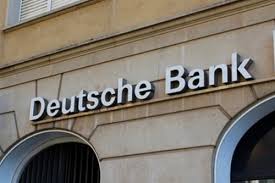The Pink City of India: Jaipur
Jaipur, known as the “Pink City” of India, is a city steeped in history, culture, and architectural beauty. With its distinctive pink buildings, grand palaces, and rich heritage, Jaipur is not only a tourist hotspot but also an essential topic for those preparing for various government exams. In this article, we delve into why Jaipur is important, its historical context, and five key takeaways that every aspirant should know.

Why Jaipur is Important
- Historical Significance: Jaipur was founded in 1727 by Maharaja Sawai Jai Singh II and is one of India’s first planned cities. It holds immense historical importance as an example of urban planning in the early 18th century.
- Cultural Heritage: The city is a treasure trove of Rajasthani culture, with its colorful festivals, traditional music, dance, and cuisine. This cultural richness is often a topic in various competitive exams.
- Tourism Hub: Jaipur is a significant tourist destination, attracting visitors with its iconic landmarks, including the Hawa Mahal, City Palace, Amer Fort, and Jantar Mantar. Knowledge about these sites is often tested in exams.
Historical Context
Jaipur was founded as part of a strategic plan to shift the capital of the Kachwaha Rajput kingdom from the nearby Amber Fort to a more centrally located area. Maharaja Sawai Jai Singh II, an enlightened ruler and astronomer, commissioned the city’s construction based on the principles of Vastu Shastra and Shilpa Shastra. The city was painted pink in 1876 to welcome the Prince of Wales, and this tradition continues today, giving Jaipur its distinct nickname, the “Pink City.”
Key Takeaways from Jaipur’s History
| Serial Number | Key Takeaway |
|---|---|
| 1 | Jaipur was founded in 1727 by Maharaja Sawai Jai Singh II. |
| 2 | It is renowned for its architectural marvels like Hawa Mahal, City Palace, and Amer Fort. |
| 3 | Jaipur is the capital of Rajasthan and a major center of culture and administration. |
| 4 | The city’s planning was based on ancient architectural principles. |
| 5 | The tradition of painting the city pink began in 1876 during a royal visit. |
Important FAQs for Students from this News
Q: What is the significance of Jaipur’s pink color?
A: The pink color of Jaipur symbolizes hospitality and was applied in 1876 to welcome the Prince of Wales.
Q: Which famous landmarks can be found in Jaipur?
A: Some iconic landmarks include Hawa Mahal, City Palace, Amer Fort, and Jantar Mantar.
Q: Who founded Jaipur, and when was it established?
A: Jaipur was founded by Maharaja Sawai Jai Singh II in 1727.
Q: Why is Jaipur important for civil service aspirants?
A: Jaipur is the capital of Rajasthan and plays a crucial role in the state’s administration.
Q: What architectural principles were used in Jaipur’s planning?
A: Jaipur’s planning was based on the principles of Vastu Shastra and Shilpa Shastra.
Some Important Current Affairs Links















